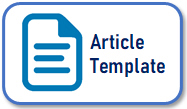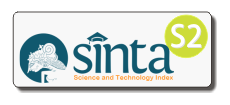Zakat Fund As The Starting Point Of Entrepreneurship In Order to Alleviate Poverty (SDGs Issue)
DOI:
https://doi.org/10.14421/grieb.2018.061-05Keywords:
zakat, entrepreneurship, poverty alleviation, SDGs, TSRAbstract
As known, Indonesia is a nation with the largerst Moslem society in the world. According to data issued by Bappenas, in 2020 the population of Indonesia is predicted about 271,066,400 people (Bappenas: 2018). 85 percent of this population (ca. 230.406.440 people) are Moslems. It shows the huge potential in the acceptance of zakat fund, as an obligation for a Moslem who has qualified in accordance with the provisions of Islam.
Since MDGs declared in 2000 (UNRC: 2008) which contains a commitment to accelerate human development and poverty alleviation (8 goals), Indonesia has a strong commitment to achieve the MDGs targets became one of Indonesia’s main priorities. As a continuation of the MDGs program, in 2015, more than 190 world leaders committed to 17 Sustainable Development Goals (SDGs). In Indonesia, 17 SDGs are grouped into 4 part, one of them is poverty alleviation (UNDP Indonesia: 2018). One of the goals for poverty alleviation is explained with the goal number 8, that is decent work and economic growth. And one of the drivers the existence of decent work and economic growth is the growth of entrepreneurship activities.The growth of entrepreneurship can be implemented with the support of funds. One of them come from the distribution of zakat fund acceptance.
By terminology, zakat means a certain amount of property that is required by Allah SWT to be given to the mustahik mentioned in the Qur’an. Or it could also mean a certain amount of certain property given to a particular person (Solihin: 2010). There is a fund transfer from muzaki (zakat payer) to mustahik (zakat recipient).With the transfer of funds, there is an expectation that there will be a better life change for mustahik, so that in time they will be becomes muzaki.This activity is expected to occur continously, forming a circle of increasing goodness. And ultimately will improve society wellbeing.
To support this paper, the author use a qualitative methods with secondary datas and supported by Tawhidi String Relation (TSR) theory which includes the method of circular causation and IIE (interaction, integration and evolution) method.
Keywords : zakat, entrepreneurship, poverty alleviation, SDGs, TSR
Downloads
 Abstract viewed: 979 times
|
Abstract viewed: 979 times
|
 PDF downloaded = 879 times
PDF downloaded = 879 times
References
REFERENCES
Al Qur’an and Translation. (2012). Bandung: Cordoba Internasional Indonesia
Az-Zuhaili, W. (2011). Fiqih Islam Wa Adillatuhu: Puasa, I’tikaf, Zakat, Haji. Umrah. Jilid 3. Jakarta: Gema Insani
Baznas. (2017). Outlook Zakat Indonesia. Online: 30/09/18. Available: https://www.puskasbaznas.com/images/outlook/OUTLOOK_ZAKAT_2017_PUSKASBAZNAS.pdf
Baznas. (2017). The Role of Zakat in The Suistanable Development Goals for Achievment of Maqasid Syariah. Online: 20/01/18. Available: http://filantropi.or.id/pubs/file/Zakat_on_SDGs.pdf
Baznas. (2016). The National Zakat Statistic 2016. Online: 26/09/18. Available: https://pid.baznas.go.id/wp-content/szn/SZN2016.pdf
Baznas. (2017). The National Zakat Statistic 2017. Online: 26/09/18. Available: https://pid.baznas.go.id/wp-content/uploads/2018/08/Statistik-Zakat-Nasional-2017.pdf
Baznas. (2018). Baznas Annual Report. Online: 30/09/18. Available: http://pid.baznas.go.id/laporan/keuangan/
Baznas. (2018). Microfinance Baznas. Online: 3/10/18. Available: http://baznas.go.id/bmf
Badan Pusat Statistik. (2018). Poverty and Inequility. Online: 30/09/18. Available: https://www.bps.go.id/subject/23/kemiskinan-dan-ketimpangan.html#subjekViewTab1
Beritagar. (2017). Number and Percentage Poor People in di Indonesia, 2011-2017. Online: 4/10/18. Available: https://lokadata.beritagar.id/chart/preview/jumlah-dan-persentase-penduduk-miskin-di-indonesia-2011-2017-1500285982
Choudhury, M.A. (2011). Contribution to Economic Analysis: Islamic Economics and Finance An Epistemological Inquiry. United Kingdom: Emerald Group.
Choudhury, M.A. (2013). Handbook of Tawhidi Methodology Economics, Finance, Society and Science. Jakarta: Trisakti University Press.
Fauzia, I.Y., and Riyadi,A.K. (2014). Basic Principles of Islamic Economics ektif Maqashid al-Syari’ah Perspective. Jakarta: Prenadamedia Group
Gümüsay, A.A. (2015). Entrepreneurship From an Islamic Perspective. Journal Business Ethics. 130: 199-208. Online: 29/09/18. Available: https://oicstartups.org/dist/files/EIP-
Entreprneurship-Islamic-Perspective-Ali.Guemuesay.pdf
Mardhani. (2013). Fiqh Ekonomi Syariah: Fiqh Muamalah. Jakarta: Kencana Prenada Media Group
Republika.co.id. (2018). Khazanah. Online: 3/10/18. Available: https://www.republika.co.id/berita/dunia-islam/islam-nusantara/18/02/23/p4m1gs409-kemenag-potensi-zakat-nasional-capai-rp-217-triliun
Rokan, M.K. (2013). Rasulullah Saw as A Role Model in Business. Sleman: Penerbit Bunyan (PT.Bentang Pustaka).
Schumpeter, J (dalam Alma,B,). (2010). Entrepreneurship. Bandung: Alfabeta
Sholihin, A. I. (2010). Sharia Economic Smart Book. Jakarta: Gramedia Pustaka Utama
United Nations. (2018). Sustainable Development Knowledge Platform. Online: 10/10/18. Available:
https://sustainabledevelopment.un.org/post2015/transformingourworld
UNDP Indonesia. (2018). SDGs in Indonesia: 2018 and After. Online: 2/10/18. Available: http://www.id.undp.org/content/indonesia/id/home/presscenter/articles/2018/sdgs-di-indonesia--2018-dan-setelah-itu.html?cq_ck=1521445399178
Downloads
Published
Issue
Section
License
Global Review of Islamic Economics and Business is licensed under a
Creative Commons Attribution-ShareAlike 4.0 International License



















